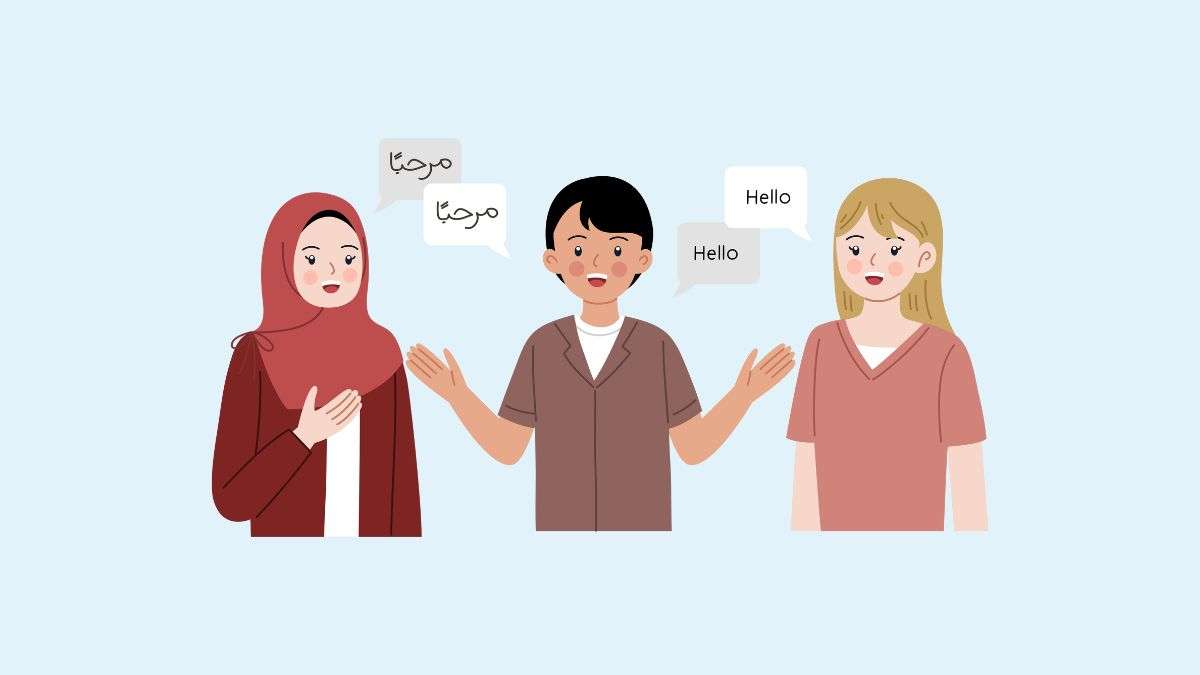Table of Contents
- Introduction
- The Evolution and Early History of Language
- Language and Power
- Technology and Language
- Language and Publishing
- Conclusion
Introduction
Language is intrinsically tied to human culture and society. Tracing the history of language illuminates pivotal milestones in human civilization, from the development of writing systems enabling record-keeping and literature to the standardization of languages facilitating administration and empire-building.
Exploring the origins and evolution of language sheds light on how we developed the capacity for complex communication and reveals key insights into history, anthropology, psychology, and more. It also surfaces thought-provoking questions about what fundamentally makes us human.
Understanding how languages emerged, diversified, spread, and sometimes died out underscores language’s dynamic nature. Appreciating this constant flux of language diversity over millennia fosters a valuable perspective on the vitality of endangered languages today. Overall, the history of language serves as a profoundly insightful lens into human nature and societies across time and geography. It merits greater attention as a bridge connecting our past to the present.
In this write-up, we will explore several captivating facets of language history:
- Theories on the evolutionary origins of human language capabilities
- Key developments in writing systems, standardization, and language preservation throughout history
- Ways language has been deliberately shaped and manipulated for power and control
- The transformative impact of technology on how we communicate across languages
Along the journey, we will uncover how language diversity came about over millennia of cultural exchange and isolation. We will also grapple with ethical complexities surrounding language vitality, discrimination, and decolonization today. By the end, you will have a richer appreciation for just how intriguing the history of language truly is! The past profoundly shapes how we communicate now and where language might head.
The Evolution and Early History of Language
The origins and early history of language have long fascinated scholars. Some theories suggest language developed from primitive grunts and gestures to communicate basic needs like food and shelter. As early humans formed more complex social groups, language may have evolved to help coordinate hunting and gathering.
Other theories propose language emerged alongside tool use, allowing early humans to share procedural knowledge. Some even argue language arose from early musical expressions. While the exact origins remain unknown, language conferred major evolutionary advantages that helped spur the development of human civilization.
Language has evolved dramatically throughout human history. Key milestones include the emergence of proto-languages among early hunter-gatherers, the development of ancient languages like Sumerian and Sanskrit with the dawn of agriculture and writing, the spread of influential languages like Greek and Latin in ancient empires, the standardization of vernaculars like English and French in later nation-states, and the rapid proliferation of languages through colonialism and globalization.
Major inventions like the printing press, the telegraph, and the Internet have accelerated language evolution and connected speakers across vast distances. Each milestone has shaped how languages are used and preserved as carriers of culture.
Impact of Cultural Influences
Languages evolve in close conjunction with the cultures that speak them. For instance, Eskimo languages have many words for snow because it is central to their environment and traditions. Polynesian languages are full of nautical terms, reflecting their maritime heritage. The German language adopted many Latin and French words related to government, law, and military due to the Roman conquest and later alliances.
Spanish and English both contain influences from Arabic and various Native American languages. Languages also borrow words to describe new concepts, like “Internet” and “emoji.” Such examples demonstrate how culture, history, geography, and exchange with other groups can profoundly shape language. Even today, globalization leads to cross-pollination of languages and cultures worldwide.
Language and Power
Language has long been used to exert control and influence over others. Those in positions of power often impose their language on those with less power, using it to further their agendas. This section explores how language has been weaponized throughout history to establish dominance.
Language as a Tool of Power
Language inherently conveys power. It gives voice to ideas, making it ripe for those seeking control to co-opt. The ruling class shapes narratives and worldviews by mandating the language used in schools, government, and other official domains. This allows them to normalize social hierarchies and belief systems that benefit their interests.
For example, in colonial India, teaching English to native populations facilitated British political and economic rule. It trained locals to think and communicate along British cultural lines while eroding native languages. This expansion of English continues today through globalization, allowing Western ideals to permeate worldwide.
Colonial Legacies
The colonial expansion of powerful nations had devastating impacts on indigenous languages. Conquerors often banned native tongues, forcing assimilation into their languages. This aided in subjugating local populations by erasing cultural identity.
In North America, Native American children were stolen from their families and sent to boarding schools. There, they were beaten for speaking their languages. This violent repression of language traumatized generations and led to the extinction of many tribal languages.
Modern decolonization movements seek to reverse this cultural damage. Initiatives to revitalize native languages help strengthen identity and self-determination for marginalized groups worldwide.
Linguistic Discrimination
Language has been used to discriminate against immigrants, minorities, disabled individuals, and more. Policies have targeted accents, dialects, or the use of non-dominant languages to reflect lower status, inadequate intelligence, or criminality. Such prejudices justify limiting social and economic rights.
For example, Ebonics arose from the blending of African and colonial languages. Many still view it as an inferior corruption of Standard English rather than a valid dialect. This leads to judgment and disadvantages for Ebonics speakers.
Linguistic discrimination remains pervasive around the globe. Countering it requires greater cultural sensitivity regarding diverse modes of communication and self-expression.
Technology and Language
The digital revolution has transformed the way we use and interact with language. Technology has changed how we communicate, access information, and express ourselves, from texting and social media to machine translation and voice assistants. It has accelerated the speed at which language evolves and enabled new forms of linguistic expression.
Some key impacts of technology on language include:
- The rise of text speak and Internet slang. Terms like “LOL,” “tbt,” and emoji shape how we write casually.
- Increased exposure to different languages and dialects. Streaming media and global social networks allow us to encounter speakers from around the world readily.
- More convenient translation and language learning. Apps provide instant translation, while online courses and immersive software make picking up new languages easier.
While technology has disrupted traditional communication norms, it has also created opportunities for bridging language barriers and enabling cross-cultural dialogue. Machine translation, although imperfect, allows people to access information in multiple tongues. Video chat helps connect distant speakers and learners. Global digital networks also give minority languages greater visibility.
However, experts also point to technology’s drawbacks in preserving linguistic diversity. The dominance of English on the Internet puts pressure on smaller languages. Increased reliance on auto-complete and predictive text potentially impacts linguistic creativity. Overuse of informal writing modes may degrade formal writing abilities over time.
As with most technological shifts, there are tradeoffs. While digital modes of communication make language more accessible and evolving, they also threaten longstanding languages and traditions. Moving forward thoughtfully and inclusively is key so that all voices can participate in our increasingly high-tech forms of linguistic expression.
Language and Publishing
Language plays a pivotal role in publishing, as it is the primary medium through which ideas, stories, and information are conveyed. The influence of language on publishing can be analyzed through several key aspects.

Firstly, the choice of language determines the potential reach of published material. Works published in widely spoken languages, such as English, Mandarin, or Spanish, have access to larger audiences, which inherently influences the dissemination of information and cultural exchange on a global scale. This prime position of certain languages has implications for the cultural and economic aspects of publishing.
Secondly, the evolution of language impacts publishing trends. Semantic shifts, neologisms, and changes in syntax are reflected in the period’s literature and nonfiction. Publishers often seek content that captures the zeitgeist, which includes the contemporary usage and evolution of language.
Thirdly, the level of language employed within published materials influences accessibility. Academic and technical texts often use specialized language, limiting their readership to those with specific knowledge or education. Conversely, plain language materials can democratize knowledge and reach broader demographics.
Moreover, the quality and precision of language affect the credibility and reception of published works. Effective editing and adherence to linguistic conventions are essential to safeguarding the integrity of the content.
Lastly, translating works from one language to another extends the influence of language in publishing by opening up access to diverse cultures and viewpoints. However, the translation process can also introduce interpretation nuances that may alter the original message or tone.
Language is a multifaceted tool in publishing that affects the reach, relevance, accessibility, and fidelity of transmitted knowledge. Whether we consider the predominance of major languages or the need for skillful translation and adapting language to different readerships, language is at the heart of the commercial and cultural aspects of publishing.
Conclusion
As we reach the end of our journey exploring the intriguing history of language, it’s worth reflecting on some of the key insights we’ve gained. We’ve seen how languages develop gradually, shaped by cultural influences and historical events. We’ve also witnessed how language can be used for empowerment or discrimination. And in modern times, technology has transformed how we communicate across linguistic barriers.
Some key takeaways include:
- Language evolution is complex, and theories abound on the origins of the first languages.
- Key milestones like developing writing systems allowed information to be transferred across generations.
- Cultural interactions and events like colonization have profoundly shaped languages over time.
- Language has been used throughout history both to empower societies as well as marginalize minority groups.
- Digital communication has connected people worldwide but also posed challenges to language diversity.
Language diversity allows us to understand the world from different cultural lenses. We gain new perspectives as we cross linguistic boundaries and connect across cultures. The next time you learn a new word or hear an unfamiliar language, consider what insights it reveals.

